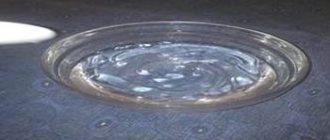Class hour on an environmental topic: “Take care of these lands, these waters...”
Material for class hour on the topic: “Ecology”
Take care of these lands, these waters, loving even the smallest epic. Take care of all the animals inside nature, Kill only the animals inside yourself!
E. Yevtushenko.
Global variability or global change has emerged as a major issue in environmental research in recent years, mainly due to the enormous impact it is likely to have on the global community.
Many natural scientists consider the term “environment” as a synonym for the word “nature”. However, nature becomes an environment only when viewed in a social context: human society depends on nature and interacts with it and changes it on different spatiotemporal scales.
Warning about the possible consequences of the expanding human invasion of nature, half a century ago, Academician V.I. Vernadsky wrote: “Man becomes a geological force capable of changing the face of the Earth.” And this warning prophetically came true.
...A century and a half ago, a serious revolution took place in the geological sciences: it was proven and recognized that insignificant changes in the natural environment, lasting long enough, lead to radical transformations of the environment, i.e. If we consider changes in the geographical environment on a scale of centuries and millennia, then the results of artificial restructuring of nature (conscious and unintentional) look very impressive. Because human activity, albeit on different, sometimes insignificant scales, over the last 10-20 thousand years has manifested itself on almost the entire landmass (except Antarctica). And everywhere man created around himself centers of change, and even transformation of nature. These outbreaks grew, they became more and more numerous, the restructuring of the environment became radical in our century, reaching truly global proportions not only in prevalence, but also in intensity.
Anthropogenic impact on the environment and human health.
Every year, people extract about 200 billion tons of rocks from the bowels of the earth, burn more than 9 billion tons of fuel equivalent, disperse up to 3 billion tons of pesticides on fields, etc. A particularly acute problem has become the problem of environmental pollution with anthropogenic toxicants: the annual global intake for carbon oxides is 25.5 billion tons, for nitrogen oxides - 65 billion tons, etc.
Industrial enterprises, motor vehicles, nuclear weapons testing, excessive use of mineral fertilizers and pesticides, etc. have a negative impact on the environment. As a result of anthropogenic human activity on the globe, according to the World Observation Institute, the following occurs:
| annual destruction of tropical rainforests on an area of 11 million hectares; |
| the annual occurrence of anthropogenic deserts on the globe on an area of about 6 million hectares; |
| annual loss of 26 billion tons of fertile layer of arable land; |
| damage to forests over an area of more than 31 million hectares as a result of acid rain. |
Thousands of lakes in some countries have become biologically dead due to acid rain. At least 25-30 thousand species of vascular plants, etc. are under threat of extinction.
The intensive rate of environmental degradation poses a real threat to the existence of man himself. The UN and UNESCO have created a global monitoring system, the main objectives of which are to determine the degree of anthropogenic impact on the environment, forecast its condition in the future, etc.
Emissions from industrial enterprises, energy systems and transport into the atmosphere, water bodies and subsoil have reached such proportions that in a number of areas of the globe, pollution levels significantly exceed permissible sanitary standards. This leads, especially among the urban population, to an increase in the number of people suffering from chronic bronchitis, asthma, allergies, ischemia, and cancer.
Noise, vibration, infrasound, as well as exposure to electromagnetic fields and various radiations have an adverse effect on human life.
The human habitat - the environment - is characterized by a set of physical, chemical and biological facts that, under certain conditions, can have a direct or indirect immediate or long-term impact on human activity and health. That is why the problem of “Environment and human health” is very acute now.
For this reason, I became interested in this issue, because well-being and our own health concern us most of all, and the environment and the human body are components of the science of ecology. The steady increase in the flow of toxic substances into the environment, first of all, affects the health of the population, the quality of agricultural products deteriorates, reduces productivity, prematurely destroys homes, metal structures of industrial and civil buildings, affects the climate of certain regions and the state of the Earth's ozone layer, leads to to the death of flora and fauna. Oxides of carbon, sulfur, nitrogen, hydrocarbons, lead compounds, dust, etc. entering the atmosphere. have various toxic effects on the human body.
Here are the properties of some impurities
CO. Colorless and odorless gas. Affects the nervous and cardiovascular systems, causing suffocation. Primary symptoms of carbon monoxide poisoning (headache) occur in a person after 2-3 hours of exposure to an atmosphere containing 200-220 mg/m3 CO; at higher concentrations of CO, a sensation of pulse in the temples and dizziness appear. The toxicity of CO increases in the presence of nitrogen in the air; in this case, the concentration of CO in the air must be reduced by 1.5 times.
Nitrogen oxides.
NO N2O3 NO5 N2O4. Mainly nitrogen dioxide NO2 is released into the atmosphere - a colorless, odorless, poisonous gas that irritates the respiratory system. Nitrogen oxides are especially dangerous in cities, where they interact with carbon dioxide in exhaust gases, where they form photochemical fog - smog. The air poisoned by nitrogen oxides begins to act with a slight cough. When NO concentration increases, severe coughing, vomiting, and sometimes headache occur. When in contact with the moist surface of the mucous membrane, nitrogen oxides form acids HNO3 and HNO2, which lead to pulmonary edema.
SO2 is a colorless gas with a pungent odor; even in low concentrations (20-30 mg/m3) it creates an unpleasant taste in the mouth and irritates the mucous membranes of the eyes and respiratory tract.
Hydrocarbons (vapors of gasoline, methane, etc.)
It has a narcotic effect, in small concentrations it causes headaches, dizziness, etc. Thus, when inhaling gasoline vapors at a concentration of 600 mg/m3 for 8 hours, headaches, coughs, and discomfort in the throat occur.
Aldehydes.
With prolonged exposure to humans, aldehydes cause irritation of the mucous membranes of the eyes and respiratory tract, and with increasing concentrations, headache, weakness, loss of appetite, and insomnia are noted.
LEAD compounds.
Approximately 50% of lead compounds enter the body through the respiratory system. Under the influence of lead, hemoglobin synthesis is disrupted, causing diseases of the respiratory tract, genitourinary organs, and nervous system. Lead compounds are especially dangerous for preschool children. In large cities, the lead content in the atmosphere reaches 5-38 mg/m3, which is 10,000 times higher than the natural background.
The dispersed composition of dust and mists determines their ability to penetrate the human body. Particularly dangerous are toxic fine dusts with a particle size of 0.5-10 microns, which easily penetrate the respiratory system.
Waste containing mineral pollution is mainly localized near the coast, only some of it is carried far beyond the territorial waters. Water pollution with mercury is especially dangerous, since contamination of marine organisms can cause poisoning of people.
The formation of acid rain is associated with the entry of sulfur and nitrogen oxides into the humid atmosphere. Stationary sources (thermal power plants, etc.) pose a particular danger. Acid rain reduces soil fertility and worsens public health.
Among the variety of chemicals and physical factors entering the environment, the most dangerous are
CARCINOGENS are substances or factors that can cause the development of malignant tumors in living organisms. Carcinogens are not removed from the body.
Carcinogenic physical factors include X-rays, radioactive isotopes and other types of radioactive contamination of the environment, as well as ultraviolet rays.
High levels of carcinogenic physical factors can, as a rule, manifest themselves in areas adjacent to emergency nuclear power facilities.
Low doses of radiation can lead to cancer, which usually appears many years after exposure. Damage caused by high doses of radiation takes several hours or days to appear.
An important factor is the destruction of the ozone layer.
It is believed that already in 1973, 1% of the ozone layer was destroyed by freons, by 2000 3% will be destroyed, and by 2050 - 10%.
The destruction of the ozone layer is especially significant over the Earth's poles and in the flight zones of spacecraft and supersonic aircraft.
Nuclear explosions in the atmosphere are especially dangerous for the ozone layer, since chlorine and nitrogen oxides enter it. A nuclear war could deplete the ozone layer by 20% or more. A reduction in O3 concentration in the ozone layer will lead to widespread skin cancer in humans, a slowdown in photosynthesis and the death of some plant species.
Thus, the destruction of the ozone layer will lead to the destruction of all life on Earth.
As a result of a 10-year experiment, Doctor of Medical Sciences V. Khasnulin developed an original method of medical geophysical forecasting. This method allows you to calculate days in advance several months in advance when weather, geomagnetic and gravitational conditions can cause a sharp exacerbation of cardiovascular diseases, mental disorders, and injuries. Long-term observations have shown that forecasts are highly justified for surges in exacerbations of arterial hypertension, myocardial infarction, strokes, as well as for emergencies, major transport accidents, etc.
But don't despair. First of all, you need to pay close attention to your health, especially on unfavorable days.
Smoking causes enormous harm to health. A smoker not only inhales harmful substances, but also pollutes the atmosphere and puts other people at risk. It has been established that people who are in the same room with a smoker inhale even more harmful substances than the smoker himself.
And the Earth became a stepmother. . .
Hypnotized by political cataclysms, rising crime, ethnic conflicts, worries about a piece of bread and other everyday difficulties, many still do not realize that the epicenter of the problem of survival has moved from the outside world inside our body.
Environmental poisoning has led to massive degradation of health. This process is aggravated by social and economic difficulties. It is becoming more and more obvious that under the current conditions, many traditional methods of treatment and recovery are losing their adequacy.
Over the past decades, in many regions of the Earth, the external environment in terms of toxic and radiation aggressiveness has become different from the one in which the evolution of the organic world took place. Essentially, it’s as if we moved to another, more cruel planet, only externally similar to Earth, where our body was formed over millions of years. The body's adaptation systems turned out to be defenseless against new types of biological aggression. The tragedy of ecology has grown into the tragedy of endoecology (the prefix “endo” means “inside the body”).
Pollution of the external environment has led to pollution of the internal environment. Not only is people’s health catastrophically deteriorating: previously unknown diseases have appeared, many diseases have become more difficult to cure than before, chronic environmentally caused intoxication is disrupting our psyche.
Over the past 4 years, the birth rate in Russia has fallen by 30%, and the mortality rate has increased by 15%. By the age of 7, 23% of children remain healthy, and by the age of 17 – only 14%. Half of the young men of conscription age are unfit for military service due to health reasons. Since the 70s, the incidence of cardiovascular diseases and cancer has increased by 50%. Children under the age of one year die in Russia 2 times more often than in the United States. Our men live on average 7-10 years less than in developed countries. In some regions, more than half of the child population suffers from allergic diseases. Many more similar, and for some regions even more acute, facts could be cited. The basis of all this is contamination of the body with toxic substances and disruption of the endoecological balance.
Environmental toxic aggression represents a special type of pathology. Having penetrated the body, environmental poisons do not linger in the blood, but are largely concentrated in the intercellular substance. The resulting disorders are associated with long-term, simultaneous accumulation of dozens of toxic substances in relatively low concentrations. This predetermines the unique distribution of poisons and their biotransformation. A combination effect is characteristic, characterized by mutual potentiation and distortion of the action of toxins. The clinical picture also goes beyond the usual ideas about the disease.
Foci of “endoecological disease” are emerging as a kind of epidemic. Its manifestations depend on the local characteristics of industry and agriculture, natural conditions and other factors. However, people still do not understand the true reasons for their illness and usually explain it by overwork, family or work troubles, financial difficulties, social and everyday reasons.
Hoping for a quick normalization of nature and social conditions is naive self-deception. This requires enormous effort and colossal funds. Even if this kind of activity will be carried out much more intensively than before, our and at least the next generation will be forced to exist in a toxic environment. Nature is dying from pollution, and so are we.
In order to maintain health and survive in the current conditions of environmental and socio-economic disadvantage, it is necessary to periodically cleanse the body - to reduce the level of toxic substances accumulating in it to relatively safe limits. Widely known medicinal herbs help remove poisons from the body: black currant (leaves, preferably young ones), marigold and others.
But before you take care of your health, you need to take care of the environment first.
Self-awareness of humanity and self-awareness of nature.
Humanity is a great geological force, gifted with self-awareness. Until now, the human mind has served primarily as a means of exercising dominance over “blind natural forces.” Reason, will, organization, mutual assistance - all these qualities have long determined the special position of man on Earth, who could withstand any natural disasters. Man has created a wonderful technology, against which earthly nature is powerless, and from an all-planetary factor has become a cosmic factor, extending its influence to the near-Earth space and some planets.
And now, when “man has become a giant,” he more and more clearly realizes the wisdom of the truth once expressed by F. Bacon: “To conquer nature, you must obey it.”
In the middle of our century, humanity began to gradually change its strategy towards nature. The alternative - domination or submission - had to be abandoned. Cooperation with nature, its worldwide protection!
But here the eternal problem of the contradiction between dreams and reality arises. Good wishes must be realized, but not all creations of beautiful human imagination can be brought to life. In relations with nature, man has always been guided by lush paradises - this did not prevent him from creating man-made deserts.
Two decades ago, it seemed that technical systems "...soon would constitute an artificial Nature - much more complex and at the same time much more flexible and obedient to the creative genius of mankind than Mother Nature ever was." This is what the English physicist D. Bernal wrote. Now such ideas look hopelessly outdated. Artificial nature, as it turned out, cannot compete with Mother Nature in either complexity, flexibility, or beauty.
... The most intricate modern physical device, the most “smart” cybernetic machine, is much simpler than an ordinary green leaf of a tree, a butterfly or a jellyfish. The better we understand the internal biochemical life of organisms and the extraordinary complexity of the relationships of individuals, species among themselves and with the environment, the more we admire the harmony of natural processes and the more clearly we understand the difficulties associated with their restructuring. We begin to comprehend the implicit wisdom of Nature, which ideally adapted natural landscapes to certain physical zones of the earth's surface. This art is difficult for us. We do not have the thousands of years that nature has in stock. We are forced to look for new, unknown natural solutions, create new landscapes, monitor their development and direct it, note the patterns of evolution in order to make reasonable predictions for the near and distant future.
Understanding the past is an essential component of predicting the future.
… The unity of nature and man must correspond to the unity of knowledge about nature and man. Only generalized knowledge, which includes, along with the natural sciences, ethics and aesthetics, will help rebuild nature according to the laws of both benefit and beauty.
But no matter how great our knowledge, we should remember ignorance. It is they who determine the harmful undesirable consequences of human activity. The successes of science do not save us from ignorance of many, many aspects of the life of nature, society, and ourselves. Therefore, without relying entirely on knowledge alone - the great power of the scientific and technological age, we have to take into account its limitations, know how to doubt, strive for beauty, trust nature...
Generalization.
Thus, I believe that the world around us and our body are a single whole, and all emissions and pollution entering the atmosphere are detrimental to our health.
If we try to do as much positive as possible for the environment, we will prolong our lives and improve our body’s health.
And one cannot but agree with the words that everything in this world is interconnected, nothing disappears and nothing appears from nowhere.
Our environment is our body; by protecting the environment, we protect our health.
Health is not only the absence of disease, but also the physical, mental and social well-being of a person.
Health is a capital given to us not only by nature from birth, but also by the conditions in which we live and create.



